Monday Jan 19, 2026
Monday Jan 19, 2026
Thursday, 17 February 2022 00:38 - - {{hitsCtrl.values.hits}}
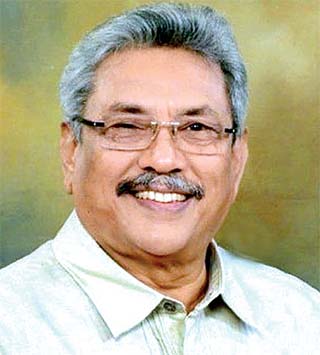
President Gotabaya Rajapaksa
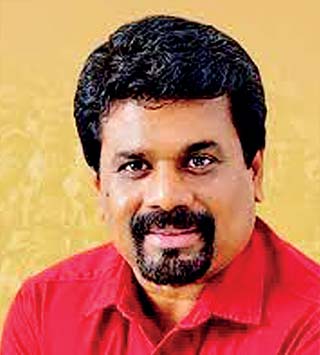
Anura Kumara Dissanayake
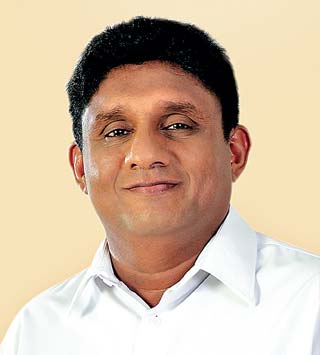
Sajith Premadasa
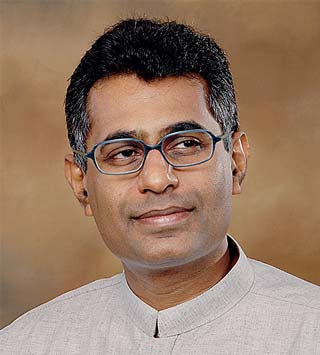
Champika Ranawaka
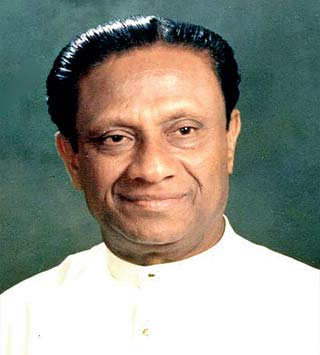
Ranasinghe Premadasa
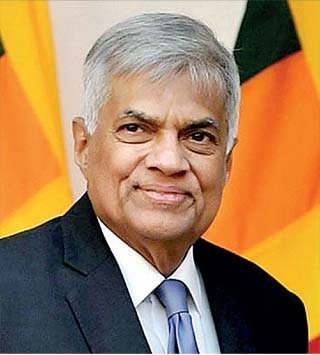
Ranil Wickremesinghe
|
 While, given our setting and long history, Sri Lankans must surely respect the principles of national independence, sovereignty, unity and territorial integrity including in the matter of Ukraine, these principles were hardly respected in the post-Cold War cases of Yugoslavia, Iraq, Libya and Syria. Hypocrisy abounds in the hysteria around the Ukrainian crisis.
While, given our setting and long history, Sri Lankans must surely respect the principles of national independence, sovereignty, unity and territorial integrity including in the matter of Ukraine, these principles were hardly respected in the post-Cold War cases of Yugoslavia, Iraq, Libya and Syria. Hypocrisy abounds in the hysteria around the Ukrainian crisis.
Ukraine-Russia-NATO
None should be blind to history and geopolitical context. Historically, Russia suffered three invasions of its territorial heartland (Napoleon, WW I, WW II) through the same zone and from the same direction. Russia’s mounting apprehensions were inevitable.
Then there’s the chain of causation. In his obituary for Princeton’s Prof. Stephen Cohen, outstanding historian of Russian affairs who died in 2020, Jonathan Steele wrote in The Guardian (UK):
“The scholar of Russian history and politics Stephen Cohen…blamed Bill Clinton and policymakers in Washington for…expanding NATO eastwards in a spirit of “we won” triumphalism. George W Bush and Barack Obama compounded the failure by siting US anti-ballistic missile systems on Russia’s borders.
…He [Cohen] passionately opposed what he felt was blind anti-Russian hysteria and the demonization of Vladimir Putin. “In the three cases widely given as examples of Putin’s ‘aggression’ the evidence points to US-led instigation,” he wrote. The proxy US-Russian war in Georgia in 2008 was started by the US-backed Georgian president who had been encouraged to aspire to NATO membership. The crisis and war in Ukraine resulted from Washington’s long-standing effort to bring that country into NATO despite Ukraine’s shared civilization with Russia. Putin’s intervention in Syria was done on a valid premise: to defeat the Islamic State group after Obama refused to join Russia in an anti-Isis alliance…’ (Stephen Cohen obituary | History books | The Guardian)
Cardinal error
The qualitative difference between the Mahinda Rajapaksa and Gotabaya Rajapaksa presidencies is symbolised by the contrast between the closeness and cordiality of Cardinal Malcolm Ranjith’s equation with President MR and the frosty mutual distancing in the relationship between His Eminence and President GR.
While in opposition, GR had a friendly equation into 2018 with the Cardinal, but even at the time, his ultranationalist inner circle of hawkish monks and Viyath Maga/Eliya personalities contained anti-Catholic hardliners.
No Sri Lankan leader can afford an adversarial relationship with the Lankan personality of the highest global achievement, rank and status, representing a transnational community of 1.3 billion people.
The Sinhala voter
The Opposition should wish for more public rallies by the SLPP such as the one at Anuradhapura, where the President refused to retract his fertiliser policy and reiterated it aggressively.
Meanwhile ‘Sri Lanka’s Lankadeepa newspaper quoted Army Commander Shavendra Silva as saying that a solider will be deployed to every farm across the island to support farmers.’
A few days after President GR’s Anuradhapura speech, the TV news showed an aggrieved peasant in his ravaged fields, saying, “It is two more years for an election; let’s wait for that and send those responsible for this crime packing so they don’t return for another generation (‘paramparaavakata’)”.
The Sinhala vote is up for grabs again, in a manner it never could be when Ranil Wickremesinghe’s neoliberal UNP was the available alternative.
Where the majority of Sinhala voters go will depend on the fusion of economic interests and normative values in their current, evolving consciousness. Their nationalism is a durable substratum, though currently subordinated to acute economic aggrievement. Subordinated, because the source of discontent is a Rajapaksa regime which cannot be outflanked on the Sinhala nationalist front. If, however, the Government were of UNP derivation, Sinhala nationalism would fuse dangerously with economic disaffection and even predominate in that amalgam.
Two mistakes can be made with regard to the Sinhala vote. One is to view it as a racist mass to be damned, or evangelically converted to the Mangala doctrine. The other is to view the Sinhala vote as purely economically-driven and devoid of Sinhala nationalism. A realist would understand that (a) Sinhala nationalism may not be dominant at the moment but will always be part of the ensemble that is Sinhala consciousness and (b) it is contradictory in character, possessing a progressive as well as a reactionary aspect.
This means pitching to the economically disaffected while accommodating or at least not hurting their national-cultural sensibilities. In David Goodhart’s political terminology, a liberal-democratic or progressive Opposition must win over the “Somewheres”, rather than continue to privilege the ideology of the “Anywheres” and the “Nowheres”. This is especially so in contemporary times when economic disaffection goes hand-in-hand with heightened economic populist-nationalism at the erosion of the economic commons on the small island.
There are half-a-million military voters (including families); over 700,000 if you count the ex-military (veterans). If these voters feel an ex-UNP Opposition cannot yet be fully trusted with the country’s fate because it has not changed sufficiently credibly so as to make them feel secure, then, then, the Sinhala vote which will not return to the Pohottuwa, will spread out between the main opposition SJB, the JVP-NPP and the SLFP, with the ratio corresponding to their respective politico-ideological positioning. I’d watch the SLFP space for surprises.
|
Opposition’s asset and advantage
The main Opposition must know what its chief comparative advantage is. The policy platforms of Anura Kumara Dissanayake’s JVP-NPP and Champika Ranawaka’s 43 Brigade are backed up only by Ministerial experience. At the level of macroeconomics, these are utterly untested models. By stark contrast, Sajith Premadasa’s SJB has two unassailable strategic advantages:
1.) A universally recognisable Big Idea or brand, Social Democracy, enjoying a revival in Europe and Latin America as the alternative to the twin failures of neoliberalism and neo-nativism.
2.) The franchise on a tried and tested macroeconomic model which ensured growth and equity simultaneously for several years.
During the Premadasa presidency, the growth rate moved from 2.3% in 1989 to 5.2% in 1992 and 6.9% in 1993. Manufacturing grew from 4.4% in 1989 to 10.5% in 1993. The Budget deficit moved from 12.6% in 1988 to 6.8% in 1993. Balance of Payments improved from minus 67 million in 1989 to plus 138 million in 1990 and plus 375 million in 1993. The debt service ratio dropped from 27.7 in 1987 to 13.8 by 1993. The share of income received by the lowest 50% of the population increased by 9.9% while the share of the highest 10% dropped by 12.8% between 1986 and 1991.
David Dunham and Saman Kelegama’s IPS study on The Second Wave of Liberalization in Sri Lanka 1989-93, highlighted the hallmarks of Premadasa’s second ‘wave’, variant, or model of liberalisation, which produced far better outcomes than the first:
“…The cash value of food stamps was doubled and a major poverty alleviation project (the Janasaviya program) was launched in 1989 as the lead project of the new government under the personal supervision of the President [Premadasa] in his capacity as Minister of Policy & Plan Implementation. It was later supplemented by programs for school uniforms and mid-day meals. He also launched a program to establish 200 garment factories in rural areas to promote rural employment and help reduce regional disparities that were becoming socially divisive…the scale and the political priority of these welfare programs created shock waves amongst economists when they were first announced…President Premadasa believed that visible benefits had to come rapidly to offset ‘adjustment fatigue’…” (Economic Reform and Governance: The Second Wave of Liberalization in Sri Lanka 1989-93, IPS Colombo)
Prof. Nalin de Silva was one of the two co-founders of the ultranationalist Jathika Chinthanaya (the other being Dr. Gunadasa Amarasekara) and one-time guru of Champika Ranawaka. Though fired from the staff of the University of Colombo by Vice Chancellor GL Peiris with the endorsement of President Premadasa and a long-time opponent of Premadasa, Prof de Silva draws some striking comparative conclusions in his post-Independence Day 2022 observations, reported in the English-language press by a leading journalist:
“… Prof. [Nalin] de Silva asserted that there hadn’t been a proper assessment or study of Premadasa. The academic propagated the hypothesis that both CBK and Ranil Wickremesinghe hadn’t been able to achieve what Premadasa did, though both enjoyed Western backing in addition to their family support. Mahinda Rajapaksa accomplished some success though he couldn’t even come closer to Premadasa whereas Maithripala Sirisena failed to make any impression…” (Current Political Crisis through the Eyes of ex-Ambassador to Myanmar)
This confirms the comparative conclusion recorded over a decade ago by Neville Jayaweera, the philosophy-trained Civil Service luminary and Westernised intellectual, the antipode of Prof Nalin de Silva:
“…The soaring vision he [Premadasa] had for his country, and I do not mean merely for the Sinhala people but for Sri Lanka as a nation, was unmatched by any political leader of the last century, either conceptually, or in terms of the intelligence and managerial energy with which he backed it up…” (http://archives.sundayobserver.lk/2009/01/11/fea15.asp)
This then is what Sajith Premadasa has inherited the franchise for, and logically the SJB must capitalise upon.
Socioeconomic majoritarianism
An Opposition which seeks to combat divisive racism must find a third destination and space: as far away from GR’s ultranationalism as from Ranil-Mangala’s neoliberal national nihilism—and equidistant from both polarities.
Neoliberalism or Populism? Should the Opposition be closer to the Ranil-CBK-Mangala policy paradigm or to the Premadasa paradigm of socioeconomic (not ethnonational) majoritarianism? Which axis of advance would bring the majority of Sinhala voters within range and possible to win over?
Guns to the Tigers or no, President Premadasa never lost the Sinhala voter and never resorted to Sinhala-Buddhist chauvinism to retain them. The initial transfer of guns and ammo took place in Alampil by military helicopter long before Premadasa was the UNP candidate and Ranjan Wijeratne the State Minister of Defence. Premadasa was way out of the loop, incapable of initiating any such decision and having it implemented.
The Indians figured who was doing it and with whose approval. High Commissioner Dixit told President Jayewardene that they should be firmly dissuaded, because next time the chopper would be shot down with whoever was on board.
Down the road, Premadasa and Ranjan felt they had to reactivate the proxy option which they had inherited, to avoid the trap of an inter-state military clash. (For an analytical account, see Dayan Jayatilleka, The Indian Intervention in Sri Lanka, 1987-1990: The North-East Provincial Council and Devolution of Power, ICES Kandy in association with The United States Institute of Peace, Washington DC, 1999).
Foreign policy paradigms
This is the time to renounce all insularity, but not one to renounce identity: a specific sense of place and an aspiration to autonomy, not autarchy or isolationism, in the world system and world affairs. There are two choices: the Ranilist-Mangalaist philosophy of the ‘outside-in’, i.e., from the international (actually the Western) to the national, or the Ranasinghe Premadasa-Lakshman Kadirgamar model of ‘inside-out’, i.e., from the national to the international.
Kadirgamar had a warm friendship with Colin Powell and Jack Straw, but for a man whose portrait was unveiled in his lifetime and in his presence at Balliol, his old college at Oxford, the highest symbol of his diplomatic success was not a selfie with the former US ambassador to the UN.
With the conspicuous exception of President Premadasa, it is the centrist SLFP and not the UNP tradition that proved more successful in the realm of foreign policy and the defence of Sri Lanka’s national interest and sovereignty.
If the Oppositional liberals’ take is that the Yahapalanaya UNP’s co-sponsorship of the Geneva 2015 UNHRC resolution is commendable because “there were no resolutions after that” against Sri Lanka during its tenure, by that logic there were no military actions by the British at the Sinhalese for three years after the treacherous Kandyan Convention of 1815 was signed either—until the 1818 Kandyan rebellion, that is.
It is also untrue that the 2015 Geneva resolution was “not against” Sri Lanka. It was explicitly predicated upon welcoming and accepting UN Human Rights High Commissioner Zaid al Hussein’s utterly tendentious report (which Foreign Minister Samaraweera did in his 2015 Geneva speech) with its outrageous conclusion that “system crimes” were committed by the Sri Lankan armed forces and state. If a UN resolution predicated upon this falsehood isn’t “against” Sri Lanka, what is?
Resolution 30/1 of 2015 “…affirms in this regard the importance of participation in a Sri Lankan judicial mechanism, including the special counsel’s office, of Commonwealth and other foreign judges, defence lawyers and authorised prosecutors and investigators”. If the act of co-sponsorship of a resolution containing that neo-colonialist affirmation by the government of the country concerned, isn’t collaborationist treachery, what is? To spin this as “true patriotism” and a brilliant diplomatic move protective of Sri Lanka, is knavish perfidy.
As Kadirgamar said of himself in his Balliol speech “the cake was baked at home”. That expressed his world-outlook. Sri Lankan foreign policy paradigms of contemporary relevance are best represented by three archetypes:
I. Lakshman Kadirgamar: Nonalignment; internationalism with full engagement around all points of the compass, with Sri Lanka’s national sovereignty as centrepiece; priority to the Asian region (especially India and China); domestic devolution of power. Kadirgamar’s opening speech in support of Chandrika’s August 2000 draft constitution was followed a year later by his excoriation in Parliament and in the Sunday papers of Ranil Wickremesinghe’s Ceasefire Agreement precisely on the basis of national sovereignty and territorial integrity (especially the Muhamalai ‘line-of-control’). Opposition to the PTOMS. Cosmopolitanism and statism.
II. G.L. Peiris: Non-alignment; internationalism bypassing the West (declining US Secretary of State Hillary Clinton’s invitation); National sovereignty minus a commitment to provincial devolution and internationally-credible, nationally-driven accountability.
III. Mangala Samaraweera: West-centric/West First globalism; disrespect and quasi-enmity towards China; co-sponsorship of a UN resolution critical of his own state, which did not have a single Asian signatory including India; internal autonomy beyond a unitary state; cosmopolitan neoliberalism with a geopolitically unrealistic, untenable ‘Transatlantic’ tilt; deleting ‘sovereignty’ and ‘the state’ from foreign policy discourse.
|
States, not clans or markets
For the SLPP/Pohottuwa, the main factors are the interest of the ruling clan and the military apparatus. For UNP/ex-UNP neoliberals, the main actors and factors are the markets. Both sides display either confusion or antipathy towards the State.
In reality, in international relations, the main player remains the State, not the clans, the military, the monks or the market. The crux remains relations between states.
The national interest of a State cannot derive from markets and ephemeral economic policy regimes. This is why international relations, foreign policy and diplomacy are sometimes clustered with World Economy/Political Economy but never taught under/as a subsidiary of Economics, still less Trade and Commerce, Banking, Management and Accounting. Rather they are taught under/with Politics and History (with Thucydides’ History of the Peloponnesian War as a foundational text).
Economic policies, policy regimes and systems change, but the concerns, interests and therefore the behaviour of states remains fairly consistent over time, deriving as they do from axiomatic geopolitical realities refracted through historical experience and applied to the realities of the current regional milieu and international situation.